UC Gardening Blogs
A Case of Mistaken Identity
They can't drain your bank account. They can't open up new credit cards. They can't get medical...
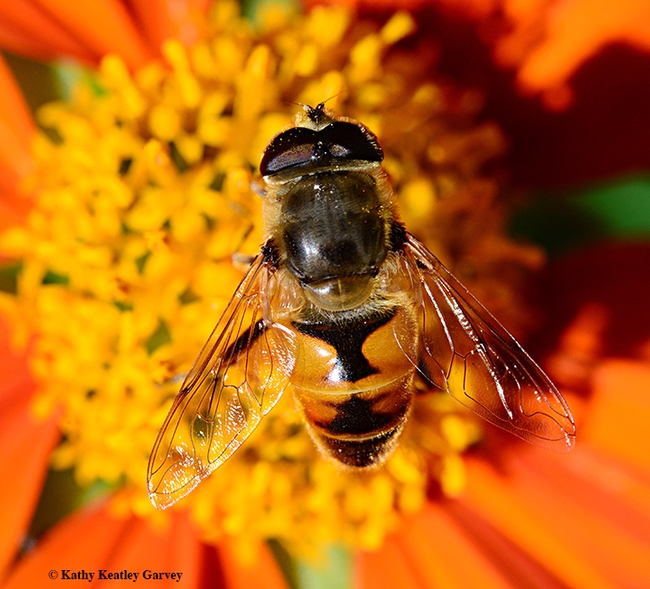
Meet the drone fly (Eristalis tenax), often mistaken for a honey bee. Note the one set of wings, large eyes, stubby antennae and a distinguishing "H" on its abdomen. (Photo by Kathy Keatley Garvey)
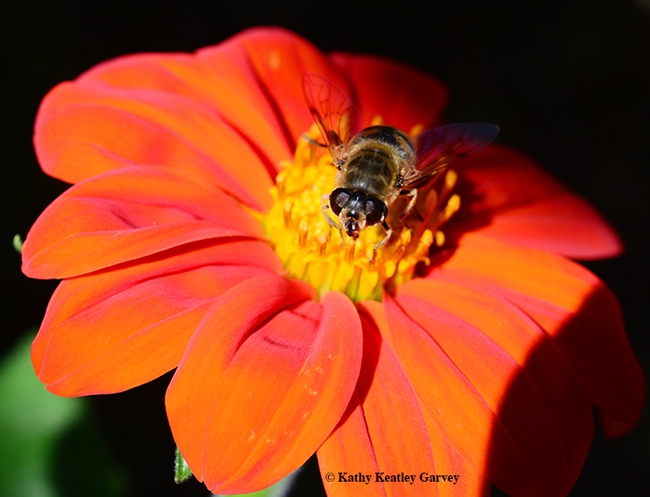
Drone fly nectaring on Mexican sunflower, Tithonia. (Photo by Kathy Keatley Garvey)
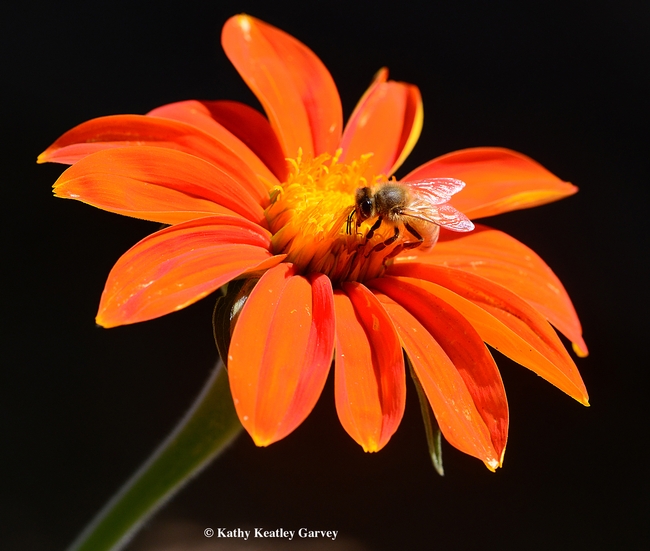
A honey bee sipping nectar from a Mexican sunflower (Tithonia). (Photo by kathy Keatley Garvey)
What This Scientist Discovered in an Insect and Why It Matters
What this scientist discovered in an insect and why it matters... Naoki Yamanaka, an assistant...
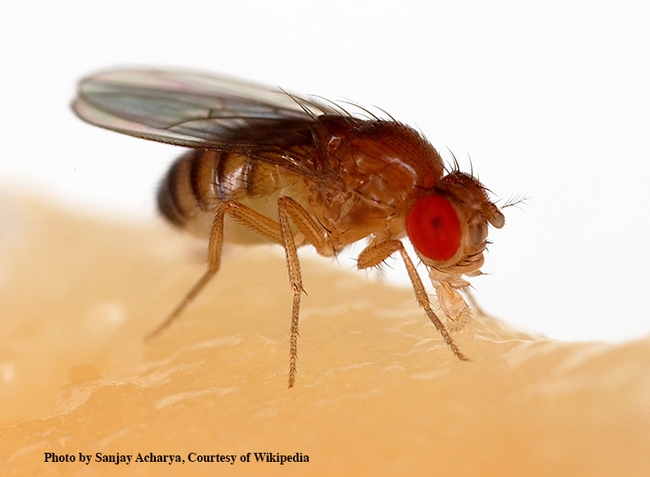
A fruit fly, Drosophila melanogaster, feeding on a banana. (Photo by Sanjay Acharya, courtesy of Wikipedia)
Blue Waves Echeveria
As I've noted before in this blog, I haven't been entirely convinced about the appeal of succulents. Maybe, however, it was a matter of finding the right one!
I absolutely adore the charming ‘Blue Waves' echeveria. This summer I picked one up from the Ruth Bancroft Garden in Walnut Creek as a birthday “bouquet” for myself. (I often justify my impulse purchases that way to myself, “it's cheaper than a bouquet and it might last longer . . . .”)
‘Blue Waves' is a small succulent with frilly-edged leaves that are blue-green at the center of the rosette and pink on the edges. The frilly blue leaves first caught my attention and prompted my impulse buy. I had no idea at the time, however, that the flowers would be so beautiful and last so long. Plant descriptions on the internet dryly describe the flowers as “pink.” The flowers are so much more than that! They look like vibrant pink tulips with a bright orange interior. When the plant first bloomed, the flower stalks curved in a manner that formed an enchanting, loose heart shape (see photo). Ultimately, the flower stalks have reached approximately 21” and have bloomed for several months.
Echeveria species and hybrids display a variety of leaf shapes and colors in a rosette form. These tender succulents, which are in the Crassulaceae family, are drought tolerant but not frost hardy. All echeveria are evergreen with flowers appearing in the spring, summer, and fall. Plant them in a location that receives at least 3-4 hours of direct sunlight. They do well in part shade to full sun in coastal areas but should be protected from the full midday sun in the hotter inland areas. Plant them in at least 6” (or up to 12” if you can) of light, fast-draining soil.
‘Blue Waves' has a mature spread of about 12-18″ tall by 9-12″ wide. It requires low to medium water. It is suitable for containers and, so far, mine is doing well in its outdoor pot. It sits on my front steps and so far, I've not been able to walk past it without taking a moment to admire it. I've been delighted with my long-lasting birthday bouquet!
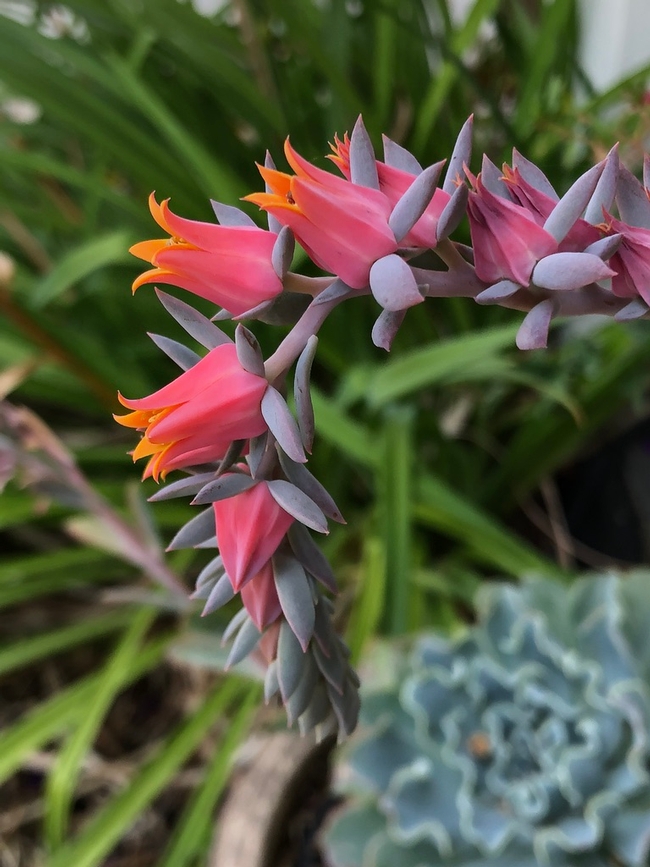
photos by Erin Mahaney
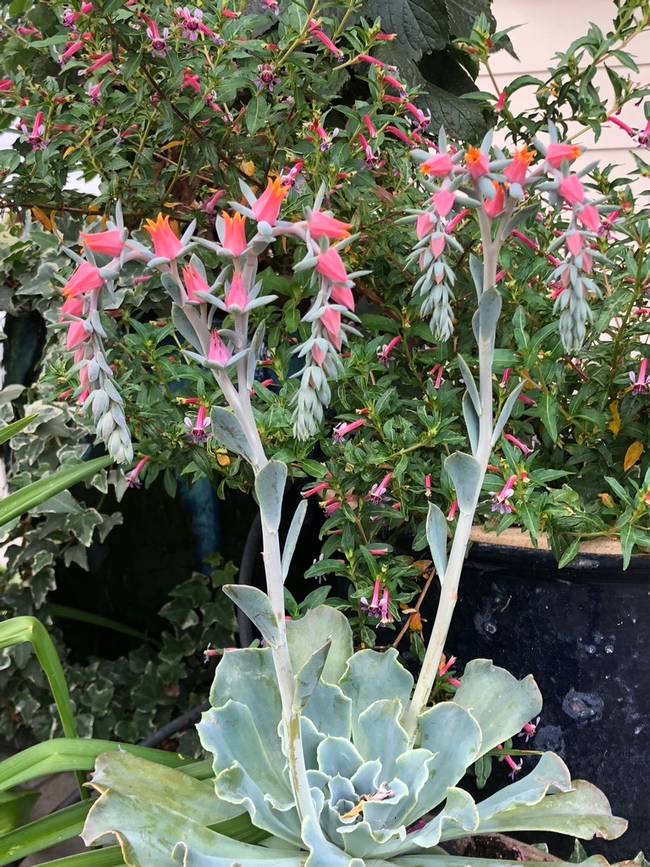
echiv plant
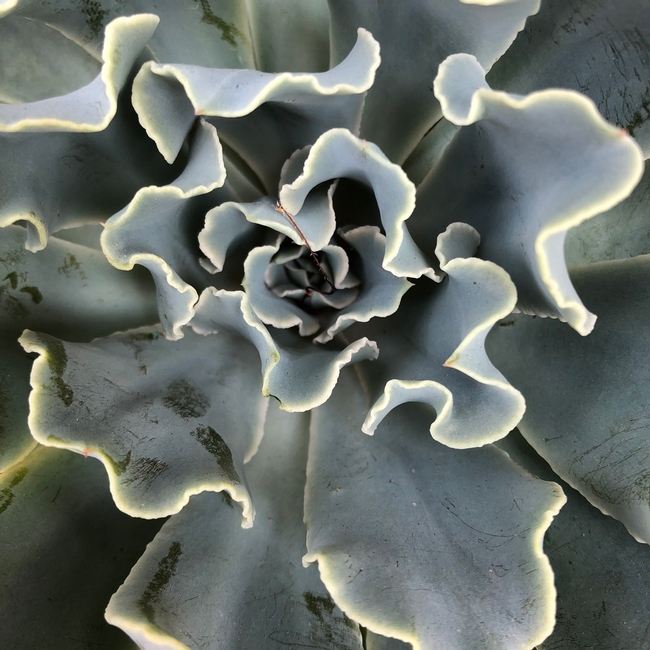
leaf closeup
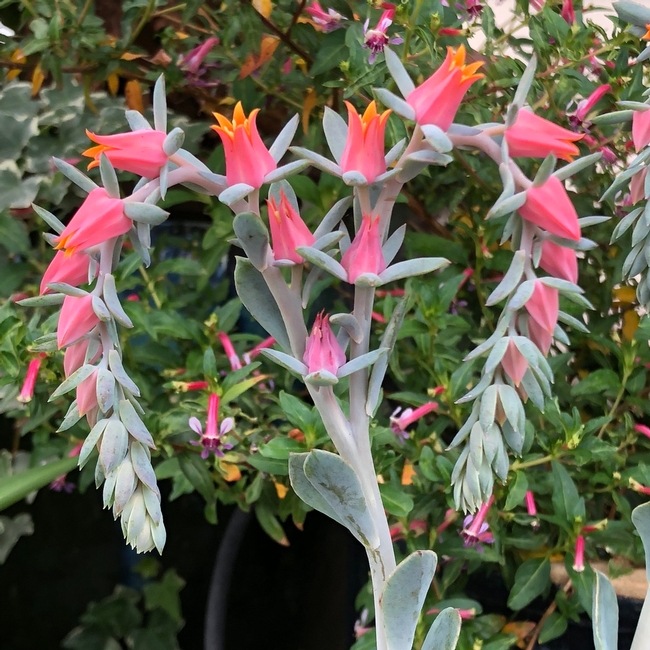
UNADJUSTEDNONRAW thumb 27377
Echinacea, Tagetes, Grindelia, and Helianthus…Oh my!: Garden flowers in the Asteraceae family
By Jeff Oster, UC Master Gardener of Butte County, October 19, 2018 Two weeks ago in this column,...
Pollinators on the Beach? Fancy Meeting You Here
So you're walking along Doran Regional Park Beach in Sonoma County on Tuesday, Oct. 16 and thinking...
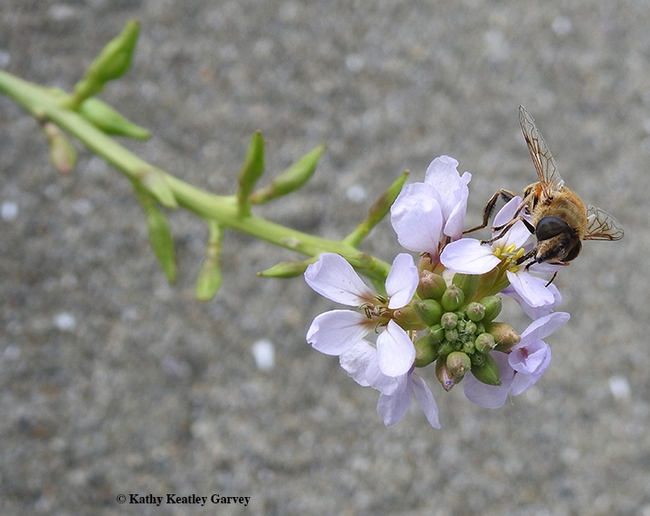
A syrphid or hover fly, Eristalis tenax, nectaring on a sea rocket plant, Cakile maritima, on Oct. 18 at Doran Regional Park Beach, Sonoma. (Photo by Kathy Keatley Garvey)
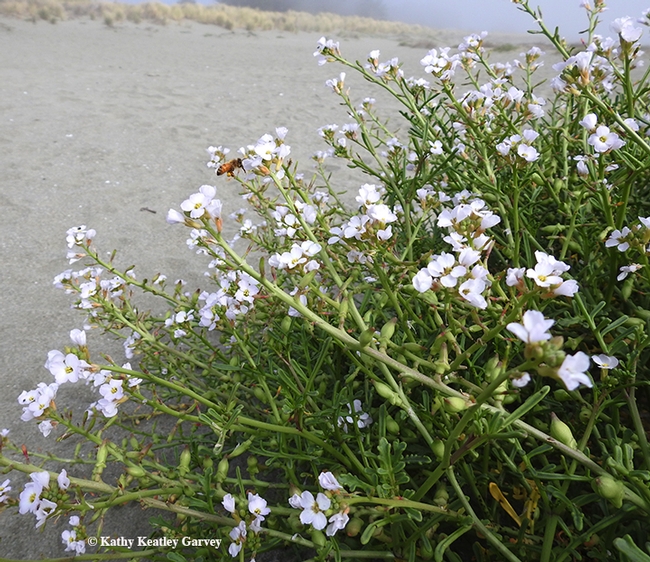
Along with sand castles and beach balls and beach umbrellas, look for pollinators nectaring on sea rocket plants at the beach. Note the honey bee. (Photo by Kathy Keatley Garvey)
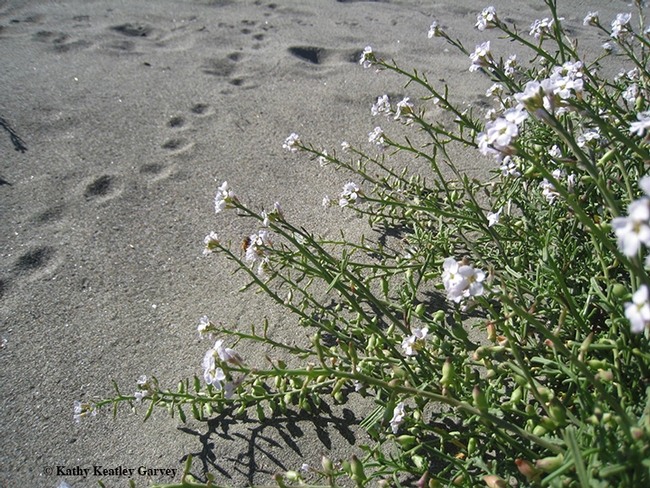
Footprints in the sand? Yes, and bees and other pollinators nectaring on sea rocket. (Photo by Kathy Keatley Garvey)
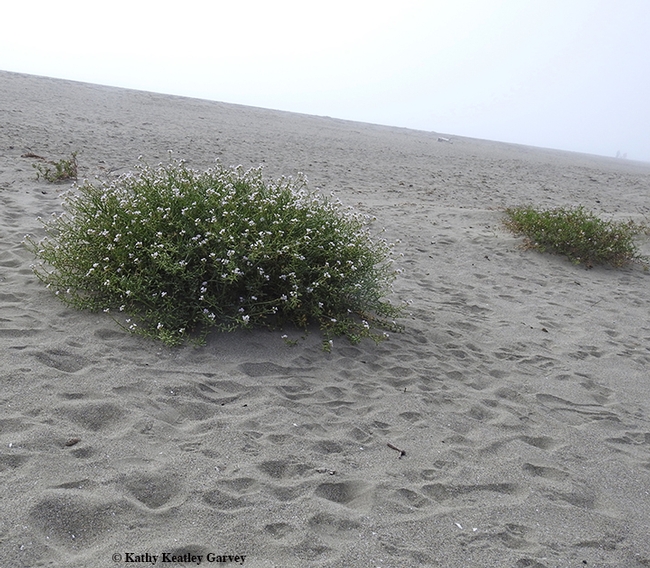
European sea rocket grows in clumps or mounds on sandy beaches along the coastlines of North Africa, western Asia, and North America. (Photo by Kathy Keatley Garvey)



